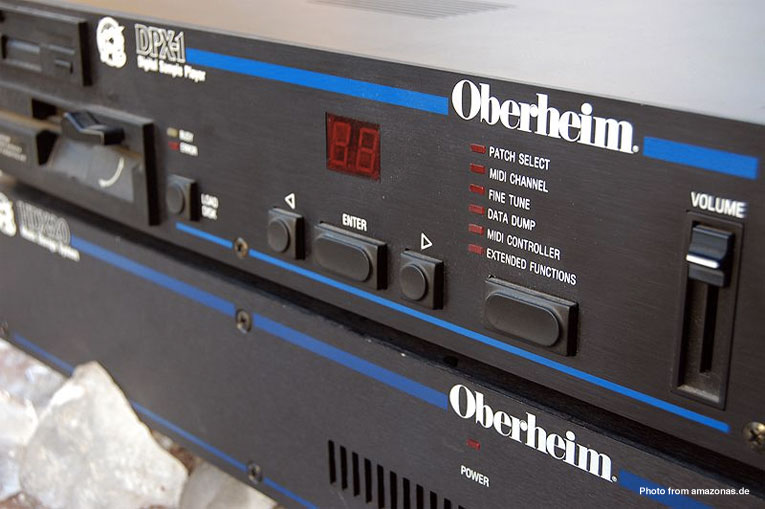Oberheim DPX-1 Sample Player
- The Emu Emulator II is a nice machine, but originally came with a semi-hefty price tag that limited owners to recording studios and wealthy musicians. The sound library was available both on Floppy Disks and CD-ROM. The CD-ROM version is much more practical, since it contains a large library on each disc, with only little swapping of discs.
- The Akai S-900 is probably the hardware sampler that really started the sampling revolution, and became extremely popular in all areas of modern music.
- The Ensoniq Mirage is a widely sold sampling keyboard, with a nice library on Floppy Disks, and provision for making your own samples.
- The Sequential Prophet 2000/2002 is a full sampling unit, with impressive specifications.
Only problem was that these machines each has their own, mutually incompatible file system, so you needed to have all units to use their sound libraries.
Oberheim saw an opportunity and provided a cross-platform solution. The Oberheim DPX-1 Sample Player could read Emulator II, Ensoniq Mirage, Akai S-900 and Sequential Prophet 2000 Disks, from Floppy and/or CD-ROM.
With the HDX-20 Hard Disk option and the Optical Media CD-ROM (3-disc) library for Emulator II attached, you really get a powerhouse instrument for a modest price. It was an only 2U high rack unit with full MIDI implementation.
I had 3 DPX-1s in my studio, with the Optical Media Library. I had a special switch made, so all units could access the library without re-patching.
The DPX-1 has one serious flaw – it suffered from quite a lot of digital and MIDI latency compared to the original machines. This had to be compensated for in the controlling sequencer by a negative delay offset to the MIDI data. Also the filter is not exactly similar to the different filters in the source machines, so sounds are not always 100% precisely reproduced. But still enough to be perfectly usable.


